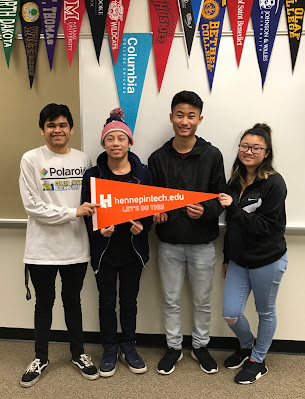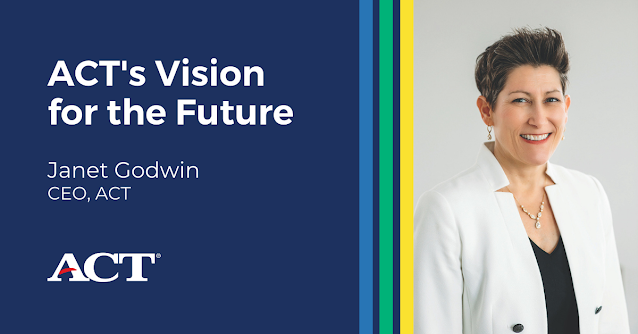IOWA CITY, Iowa — Roughly half of high school students report using popular AI tools, according to a new report released today by ACT, the nonprofit organization that administers the college readiness exam. Students who do not use the tools seem to be more skeptical of the technology.
“In today’s increasingly digital age, we know that student use of AI tools is of interest to families and teachers alike,” ACT CEO Janet Godwin said. “This new research gives us a better understanding of how students really feel about using these tools in the classroom and how it affects their work. Students are already exploring how they can use AI, but there is real skepticism about AI’s ability to create work in which students can be confident.”
Just under half (46%) of students in grades 10 to 12 said they used tools like ChatGPT, Dall-E 2, Bing Chat, and others on a combination of school and non-school assignments at the time of the survey.
Among students who did not use AI tools, no interest in these tools was the top reason for not using them. About two-thirds of students also reported that they did not trust the information provided by AI tools, and a little more than half indicated that they did not know enough about AI tools to use them. “Occasionally they will put things in that [are] just wrong … I don’t trust AI,” one student wrote.
“A majority of the students who didn’t use AI tools were either uninterested in or distrusted the results that the tools provided,” explained Jeff Schiel, a lead research scientist at ACT and one of the authors of the report. “Even students who used the tools for school assignments found that they were far from perfect, as a majority reported errors or incorrect information within the responses that AI provided. This shows that as knowledge and awareness of AI tools grows, information about how to use them correctly is just as important.”
Students with higher ACT Composite scores were more likely to use AI tools than those with lower scores. In addition, students with lower scores were considerably more likely to report not using AI tools because they did not have access to them or did not know enough about them, compared to students with higher scores.
“As AI matures, we need to ensure that the same tools are made available to all students, so that AI doesn’t exacerbate the digital divide,” Godwin said. “It’s also imperative that we establish a framework and rules for AI’s use, so that students know the positive and negative effects of these tools as well as how to use them appropriately and effectively.”
The report is based on the responses to a June 2023 ACT survey from 4,006 students in grades 10 to 12.
Key findings:
- Forty-six percent of students surveyed reported that they had used AI tools. Of those who reported using AI tools, 46% reported using them for school assignments.
- The main reasons for not using AI tools included a lack of interest in them (83%), not trusting the information they provide (64%), and not knowing enough about them (55%). Other reasons for not using AI tools, based on students’ written responses, included considering the use of AI tools immoral or unethical, viewing the content or information provided by AI tools as inaccurate, and being willing to do the work by themselves and not seeing the need for using AI tools.
- AI tools were most commonly used in language arts, social studies, and science classes, at 66%, 49%, and 37% of students using the tools for those types of classes, respectively.
- Despite nearly half of students reporting using AI tools for school assignments, 62% of students said that teachers did not allow use of AI for schoolwork.
- The most common AI tools used by students were ChatGPT, Dall-E-2, and Bing Chat, used by 83%, 17%, and 11%, respectively.
- Of the students who used AI tools for school assignments, a majority (63%) reported that they found errors or inaccuracies in the generated responses.
- AI tool use was significantly related to students’ academic achievement; students with higher ACT Composite scores were more likely to use AI tools than those with lower scores. Fifty-three percent of students with an ACT Composite score in the top quarter of respondent score distribution used AI tools, compared with 36% of those in the bottom quarter.
- Students differed in their opinions around banning AI tools on school-owned networks and devices. Forty-two percent of students reported that their school should ban AI tools, 34% said they should not be banned, and 23% did not know what decision should be made.
- Outside of school, students reported using AI tools for entertainment or hobbies, personalized recommendations, help with non-school writing, general information, and advice.
- Only 10% of students said they considered using AI to write their college admissions essay. Students cited negative consequences, dishonesty, quality of writing, and a poor reflection of their own authentic writing style as reasons for not using AI tools to write an essay.
ACT is a mission-driven, nonprofit organization dedicated to helping people achieve education and workplace success. Grounded in more than 60 years of research, ACT is a trusted leader in college and career readiness solutions. Each year, ACT serves millions of students, job seekers, schools, government agencies and employers in the U.S. and around the world with learning resources, assessments, research and credentials designed to help them succeed from elementary school through career. Visit us at www.act.org.
Contact: Allie Ciaramella; allie.ciaramella@act.org













.jpg)

.png)




